This website was created to detect, with the help of the public, the appearance of two dangerous tick species, Hyalomma marginatum, and Hyalomma rufipes in Hungary.
These ticks are not native to Hungary, their natural habitat is further south, along the Mediterranean Sea, in Africa, and the southern part of Asia. Thanks to the recent mild autumns and winters, these two species – together with many others – are now able to survive in the northern areas of Europe. Specimens have been found in Sweden, Germany, and the United Kingdom, among others. In addition to species migration enhanced by global warming, Hyalomma species are unfortunately also remarkable from another point of view, as they can carry and spread dangerous pathogens, including the virus that causes Crimean-Congo hemorrhagic fever.
To be able to prepare for newly emerging pathogens in Hungary, it is important to know the extent to which these species are present in the country, so we ask for your help: if you come across Hyalomma ticks, please let us know.
HOW TO CONTRIBUTE
How can you help in mapping the distribution of the two species in Hungary?
Primarily by submitting photos. If you think you have found a Hyalomma tick, please take the best possible photo of it. If possible, it is important to record the animal’s upper and lower sides as well.
It is especially helpful for us if we can examine a specimen that is still alive, so if you kept the tick alive, please place it in a well-sealed container (e.g. zip lock bag, medicine jar) after taking the photos and contact us via e-mail.
MAIL:
DR. GÁBOR FÖLDVÁRI, PhD
Centre for Ecological Research
Institute of Evolution
Konkoly-Thege Miklós Str. 29-33., H-1121 Budapest
When submitting images, please include the following information:
- Name and email address of the sender
- The exact date you found the tick
- The location of the sighting – settlement name, geographical area
- Where did you find the tick? for example: on the ground, on some animal, on a person
- Did the tick crawl on the body surface or has it already started feeding?
- On which part of the body did the tick suck blood?
If you have spotted the tick on a person or a domestic or farm animal, please indicate if the person/animal has visited a foreign country in the past 2 weeks, together with the indication of the country.
Thank you for your help!
We handle the submitted data carefully! The information provided will only be used within the research, and no one other than the survey takers will have access to it.
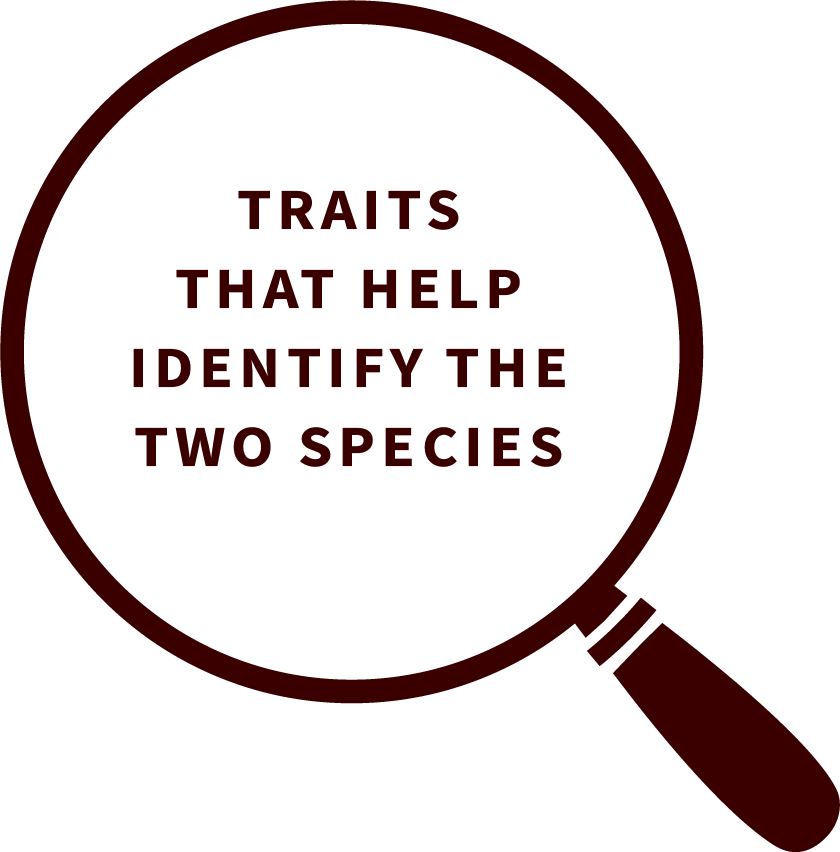
GOOD TO KNOW
Basic information
Hyalomma marginatum and Hyalomma rufipes are two species of ticks originally distributed in Southern Europe, Africa, and Central Asia. Their importance is given by the fact that both are capable of spreading dangerous pathogens, including the virus that causes Crimean-Congo hemorrhagic fever. These ticks, which are not characteristic of temperate climates, reach the central and northern regions of Europe with the help of migratory birds. This is also how a H. marginatum nymph specimen found on a hedgehog in 2009 could have ended up on Margit Island. The two tick species mentioned require special attention, as thanks to the mild autumns and winters of recent years, they can survive further north of their original habitat. Adult individuals have been found, for example, in Germany, Sweden, the Czech Republic and also in Hungary.

How do we recognize it
Compared to other domestic tick species, the most visible difference is the strong banding of the legs. In addition, Hyalomma species are characterized by grooves on the bottom of the upper part. They have an oval shape and are widest around the middle of their back. Their size varies depending on the sex, females are on average 5.5-6.5 mm long, and males 3.8-5.6 mm long, which makes them particularly large compared to the ticks found in our country.
How does it spread?
Lifestyle
In contrast to the ambush strategy of common Hungarian ticks, the Hyalomma species hunt actively, they can even follow the selected host for several meters. Their well-developed eyes help them a lot in choosing their target. Adults are active above about 12°C, but hide when the soil temperature rises above 45°C. In addition to humans, Hyalomma species prefer to parasitize horses, cattle, and other domestic or wild ungulates, and other domestic animals such as dogs. They can also occur in huge numbers on larger host animals, in areas where the tick is native, up to 100 at a time. They especially like the area around body openings, they often occur in the anus area. Full-fed females drop to the ground after breeding and lay their eggs, the number of which can reach up to 7,000.
video about Hyalomma species
source: youtube.com
Why is it dangerous?
Hyalomma marginatum and Hyalomma rufipes became known primarily due to the spread of the Nairovirus species causing Crimean-Congo hemorrhagic fever in Europe. These pathogens cause problems mostly in Africa, Asia, and the Balkan region. There are occasional outbreaks of infection here, especially in people who keep animals and hunt, often due to contact with animal internal organs and blood and improperly disinfected tools. Symptoms of viral infection include joint pain, vomiting, high fever, headache, stomach and back pain, and various bleeding symptoms. 30% of patients do not survive the infection, and no preventive vaccination has yet been prepared. The virus sometimes emerges in Europe as well, causing the biggest problem in the Balkan region, primarily in Greece, Bulgaria, Albania and recently in Spain.
In addition, unfortunately, neither the tick nor the virus is unknown in our country. During a 2009 research, a nymph of Hyalomma marginatum was found on a hedgehog on Margit Island, and two adult male Hyalomma rufipes were found during another survey on cattle. Research on the Crimean-Congo hemorrhagic fever virus was carried out with rodents, and 20 of the 2,085 animals examined had the antibody against the Crimean-Congo hemorrhagic fever virus.
A recent research also confirmed that the virus is also present in the Hungarian population. In the course of this, blood samples from voluntary blood donors were tested for the presence of antibodies produced against the virus. Antibodies were detected in 10 of the 2,700 samples tested, and based on these, 0.37% of the blood donors selected for the survey had already been infected.
In addition to the Nairovirus that causes Crimean-Congo hemorrhagic fever, the Hyalomma species can also carry the bacterium Rickettsia aeschlimannii, and diseases related to this pathogen have also been detected in Europe.
FREQUENTLY ASKED QUESTIONS
What can it be confused with?
There are 20 to 23 species of ticks in Hungary, some of which parasitize on hosts that are also favored by the Hyalomma species. The distinction may not be easy at first, but the following images help with the difficulties:
Perhaps the most characteristic feature of the Hyalomma species is the clear, ring-like banding of the legs. Upon closer observation, small, longitudinal furrows on the upper border can be observed. The shape of the animal also helps to distinguish it, the individuals are oval-shaped before sucking blood and are widest in the middle of their back. In contrast to many other species, they don’t just attack from an ambush, they often actively hunt, following the selected host. They are larger and move quickly compared to native tick species in our country.
Hyalomma
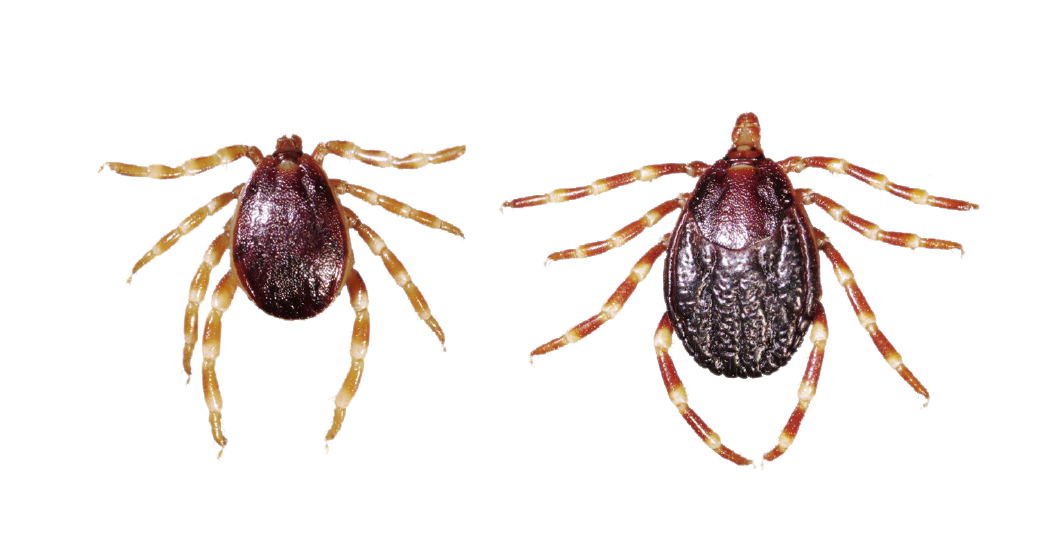
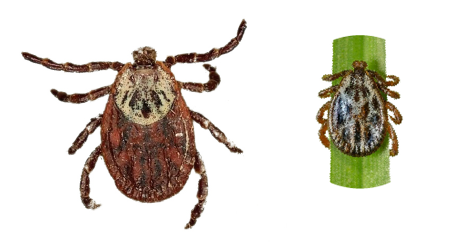

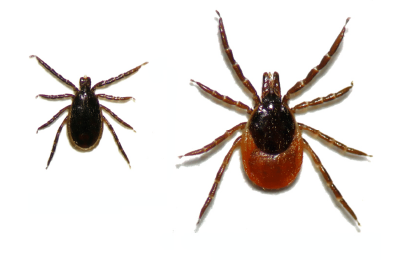

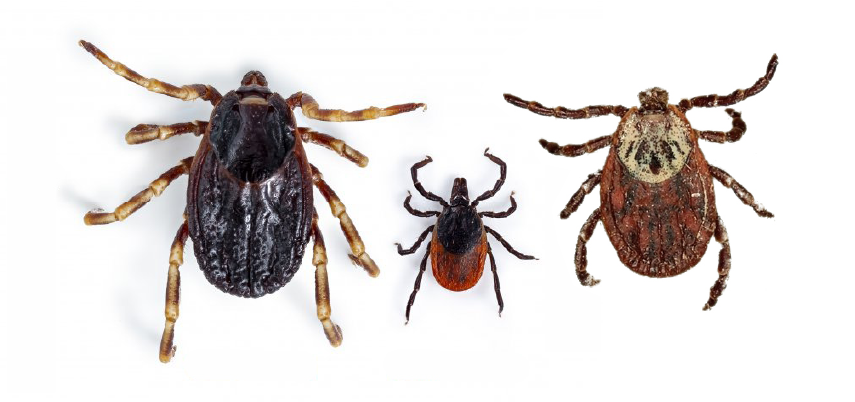
Visible size difference between Hyalomma Ixodes and Dermacentor ticks
How to prevent tick bites?
Hyalomma species are most active in the warmer months of the year, from spring to the end of autumn, during this period it is important to pay close attention. Avoid areas covered with higher undergrowth, weeds, and scrub if possible. If this is not possible, for example during a hike or gardening, it is worth wearing clothing that is as closed as possible. The most important tool for prevention is the tick check, i.e. a thorough examination of the body surface of yourself and even more so of your family members.
How do I remove the tick?
With tweezers – or if you don’t have one, with your nails – grab the tick as close to the skin surface as possible and pull it out carefully but firmly.
RESULTS
830
citizen
reports
and
27
Hyalomma
ticks
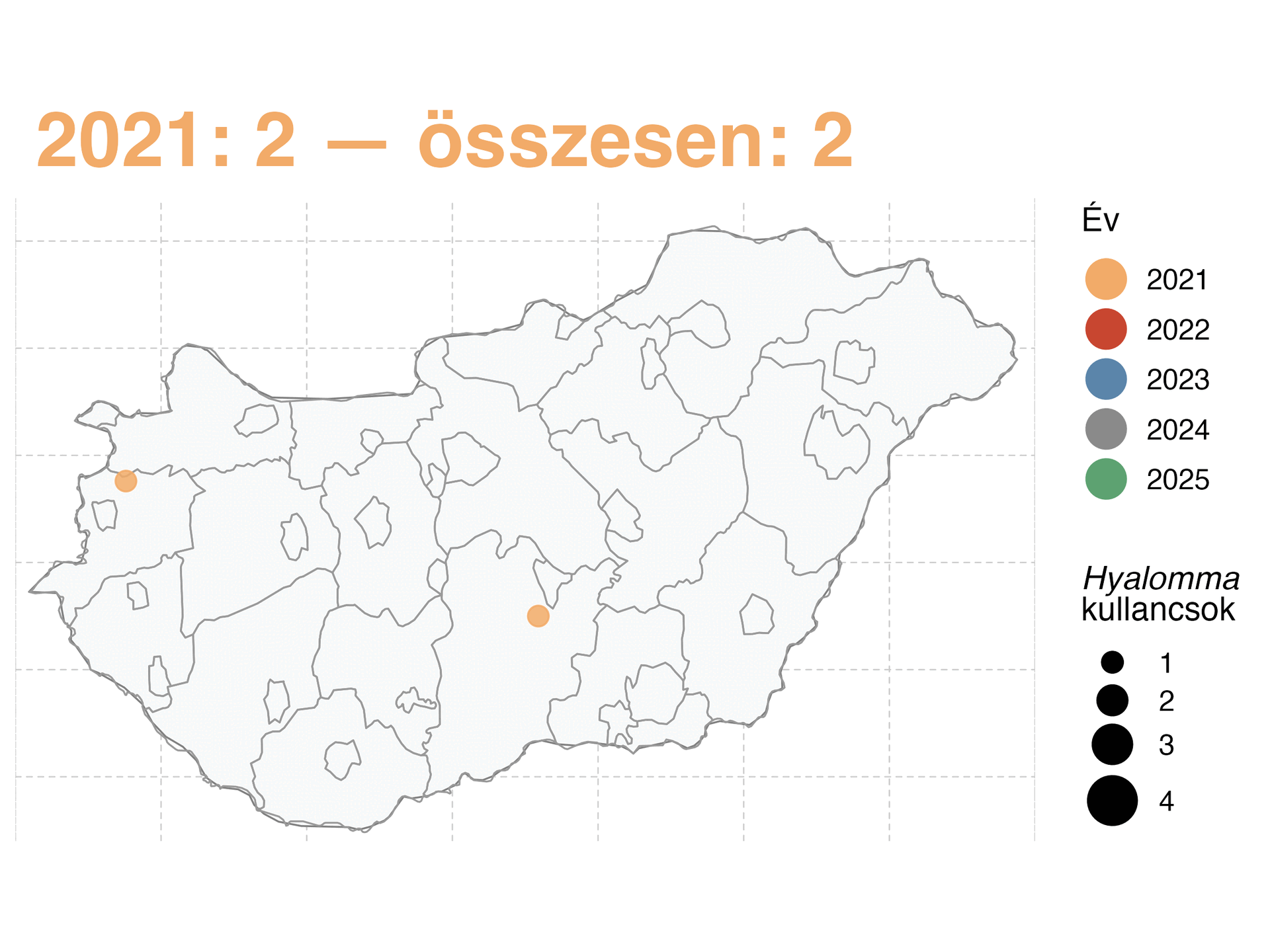
MEDIA APPEARANCES
In Hungarian
ATV
SZABAD FÖLD
Lesben állva várnak – A természetet járva azt tapasztalhatjuk, hogy egyre több a kullancs. Szélesebb időintervallumban találkozhatunk a betegségeket hordozó vérszívó parazitákkal, melyek az eddig megszokottaktól eltérő helyeken is felbukkanhatnak.
Forrás: Szabad Föld
ORIGO
Rejtélyes kullancs keltett riadalmat Magyarországon – szakértőt kérdeztünk arról, kell-e aggódni miatta
Forrás: Origo
REFERENCES
Apanaskevich, D. A., & Horak, I. G. (2010). The genus Hyalomma. XI. Redescription of all parasitic stages of H. (Euhyalomma) asiaticum (Acari: Ixodidae) and notes on its biology. Experimental and Applied Acarology, 52(2), 207–220.
Chitimia-Dobler, L., Schaper, S., Rieß, R., Bitterwolf, K., Frangoulidis, D., Bestehorn, M., Springer, A., Oehme, R., Drehmann, M., Lindau, A., Mackenstedt, U., Strube, C., & Dobler, G. (2019). Imported Hyalomma ticks in Germany in 2018. Parasites and Vectors, 12(1), 1–9.
Estrada-Peña, A., Jameson, L., Medlock, J., Vatansever, Z., & Tishkova, F. (2012). Unraveling the ecological complexities of tick-associated crimean-congo hemorrhagic fever virus transmission: A gap analysis for the western palearctic. Vector-Borne and Zoonotic Diseases, 12(9), 743–752.
Földes, F. és mtsai. (2019) „Ticks and Tick-borne Diseases Serologic survey of the Crimean-Congo haemorrhagic fever virus infection among wild rodents in Hungary”, Ticks and Tick-borne Diseases. Elsevier, 10(6), o. 101258.
Földvári, G., Rigó, K., Jablonszky, M., Biró, N., Majoros, G., Molnár, V., & Tóth, M. (2011). Ticks and the city: Ectoparasites of the Northern white-breasted hedgehog (Erinaceus roumanicus) in an urban park. Ticks and Tick-Borne Diseases, 2(4), 231–234.
Germanakis, A., Chochlakis, D., Angelakis, E., Tselentis, Y., & Psaroulaki, A. (2013). Rickettsia aeschlimannii infection in a man, Greece. Emerging Infectious Diseases, 19(7), 1176–1177.
Grandi, G. és mtsai. (2020) „First records of adult Hyalomma marginatum and H. rufipes ticks (Acari: Ixodidae) in Sweden”, Ticks and Tick-borne Diseases. Elsevier GmbH., 11(3), o. 101403.
Grandi, G., Chitimia-Dobler, L., Choklikitumnuey, P., Strube, C., Springer, A., Albihn, A., Jaenson, T. G. T., & Omazic, A. (2020). First records of adult Hyalomma marginatum and H. rufipes ticks (Acari: Ixodidae) in Sweden. Ticks and Tick-Borne Diseases, 11(3), 101403.
Hoogstraal, H. (1979). The Epidemiology of Tick-Borne Crimean-Congo Hemorrhagic. J. Med. Entomol., 15(4), 307–417.
Hornok, S., & Horváth, G. (2012). First report of adult Hyalomma marginatum rufipes (vector of Crimean-Congo haemorrhagic fever virus) on cattle under a continental climate in Hungary. Parasites and Vectors, 5(1), 2–5.
Hubálek, Z., Sedláček, P., Estrada-Peña, A., Vojtíšek, J., & Rudolf, I. (2020). First record of Hyalomma rufipes in the Czech Republic, with a review of relevant cases in other parts of Europe. Ticks and Tick-Borne Diseases, 11(4), 2019–2021.
Leblebicioglu, H. (2010). Crimean-Congo haemorrhagic fever in Eurasia. International Journal of Antimicrobial Agents, 36(SUPPL. 1), 43–46.
Magyar, N. és mtsai. (2021) „New geographical area on the map of Crimean-Congo hemorrhagic fever virus: First serological evidence in the Hungarian population”, Ticks and Tick-borne Diseases, 12(1), o. 1–5.
Nava, S. (2020). Ticks of Europe and North Africa. A Guide to Species Identification. By Agustín Estrada‐Peña, Andrei Daniel Mihalca and Trevor Petney (eds). Published by Springer International Publishing, 2017, 404 pp; ISBN 978‐3‐319‐63759‐4. Medical and Veterinary Entomology, 34(1), 127–127.
Santos-Silva, M. M., & Vatansever, Z. (2017). Hyalomma marginatum Koch, 1844 (Figs. 139–141). Ticks of Europe and North Africa, 1844, 349–354.
https://www.ecdc.europa.eu/en/disease-vectors/facts/tick-factsheets/hyalomma-marginatum
http://www.animaldisease.org/TICK/TIK/tick-key/hyalomma_adult.htm



